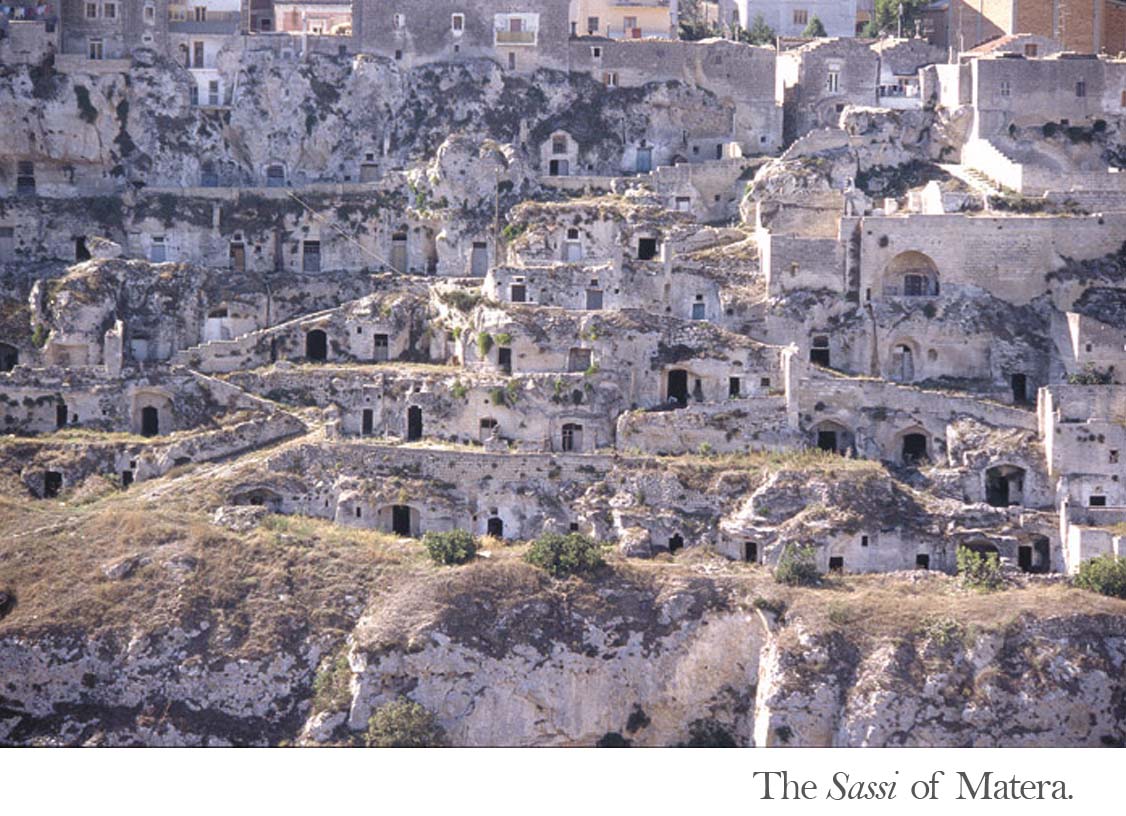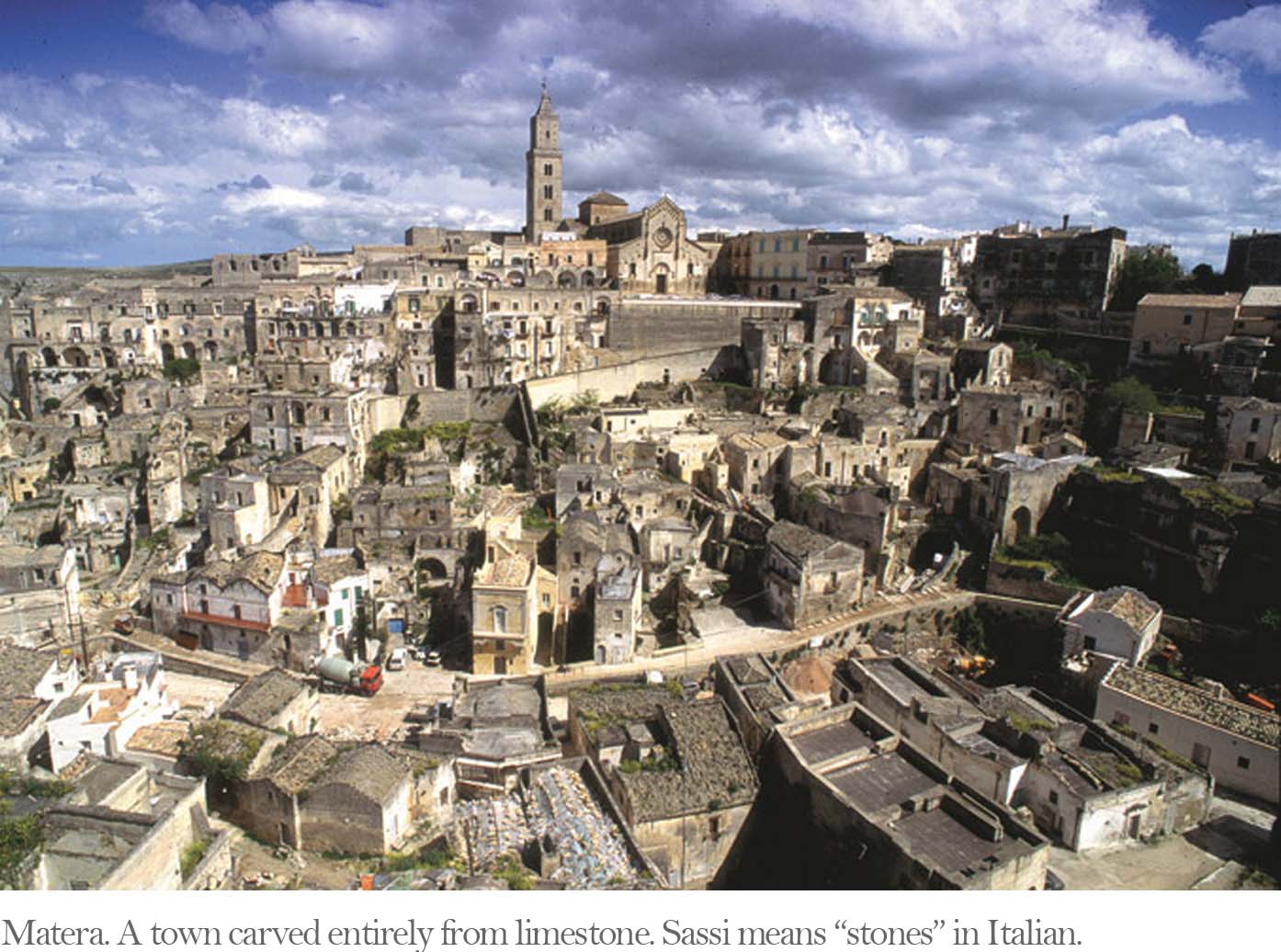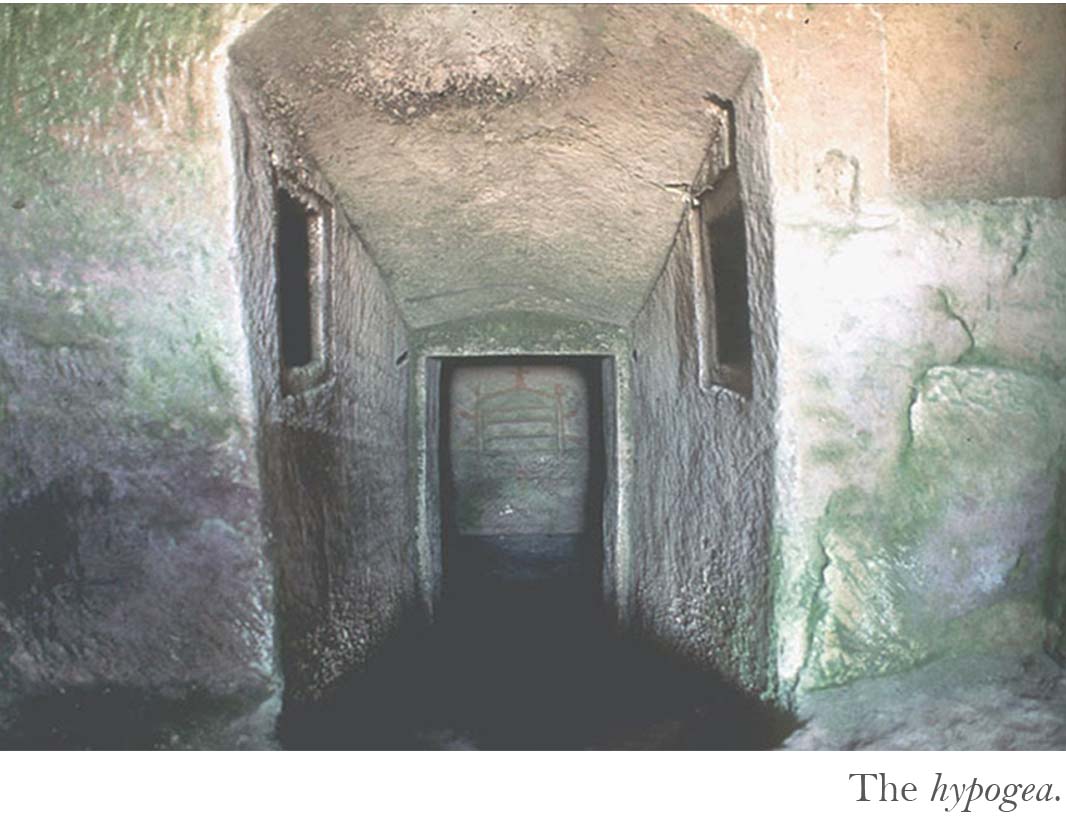 |
| Technique: |
DIGGING CAVES TO CATCH WATER |
| Project: |
The restoration of ancestral in the Sassi of Matera |
| Site: |
Matera, ITALY |
|
Location

Click the globe to see the technique on Google Map
|
Continent: Europe
Country: Italy
Site: Matera
Coordinates:
Lat.:
40.66
Long.:
16.60 |
Brief introduction
Matera is a town famous for its traditional urban system. Located in the heart of the Basilicate in southern Italy, it owes its celebrity to its exceptional historical center called the ‘Sassi’. The Sassi, meaning literally ‘stones’, make up a town carved out entirely from limestone. The traditional dwellings are formed from the actual sloping wall of a deep ravine. The techniques used to hollow out the limestone plateau and to collect water, employed up until contemporary times, appeared in the Neolithic era. The ingenious arrangement of stones helped create natural ventilation systems and collect water from humidity. The evolution of archaic structures for the collection of water in towns is responsible for the Sassi of Matera as they appear today. Over the centuries, the low water levels in rivers and groundwater reserves, alternating with violent and intense rain, has rendered the practice of conservation of underground sources of water and water collection indispensable. The case of Sassi of Matera is a perfect example of how the regional natural topography favours this type of dwelling. The town is constructed on the edges of profound ravines, the Gravine. The inhabited areas are not situated at the foot of the canyon as might be expected, but on their steep flanks and at its summit. In fact, water coming from rain and frost is collected by the drainage system and in caves, unlike water used for drinking and cooking, which comes from river sources. To maximize the use of rainwater, dwellings are constructed around a courtyard. Here, a large tank for the community is dug out that collects water from the roofs, the edges of which never go beyond the walls of the houses. Because then roof is part of the stone work, not a single drop of water is lost. It is channeled directly to the tank by means of descending terracotta conduits. Galleries radiating from these central wells maintain a constant temperature throughout the year and constitute an ideal refuge for people and livestock as well as serving as perfect storage places for wheat and water. Another type of dwelling and method of collecting water is formed from simple piles of stones or created by vaults carved from the rock. These structures form tulmuluses, and fulfil their function during the day as well as at night. During the day, the highhumidity winds percolate into the spaces between the numerous stones. The inner wall, not exposed to the sun, remains cooler than the outside. The drop in temperature brings about condensation of the droplets that fall into a cavity. The water accumulates, providing humidity and a cooler environment, which enhances the effectiveness of condensation. At night, the process is reversed, the exterior is cooler than the interior and condensation occurs, producing similar results. The humidity condenses and produces frost on the exterior of the dwellings. The following day the frost melts and filters down between the spaces into the cavity. The system of dwellings in the Sassi of Matera has been constructed with prehistoric techniques combining various principles for the collection of water—its capture, percolation and condensation—and is thus adapted to its surroundings. During violent rains, the terraces and the system of water collection protect the slopes from erosion. During the dry season, the hollowed-out cavities work like an “inhaler” of atmospheric humidity
Problems, causes and effects
During the 1950s the Sassi of Matera was closed due to their neglected condition, and the 20,000 inhabitants were moved to other neighbourhoods. The abandoned houses became the property of the state and a wall was erected to prevent them from being occupied. The Sassi of Matera was transformed into a ghost town, the greatest historical troglodytic centre in the whole of Europe was completely abandoned.
Solutions/Project description
In 1986, largely thanks to the motivation of individuals involved in cultural activities, the Italian Government allocated 100 billion lire to restore the Sassi and to undertake the work necessary to improve its sanitary conditions and urbanization, and to encourage private individuals to take up residence there. All the state properties were entrusted to the Mayor of Matera, responsible for financing the project. The turning point in the management of the Sassi came about with their inscription in 1993 as a UNESCO World Heritage Site. The Sassi’s UNESCO registration and the successful rescue of the area are largely due to the efforts of Ipogea, which was founded under the auspices of UNESCO and ICCROM to monitor their restoration and to establish in the Sassi an enterprise specializing in stone architecture and traditional techniques. Ipogea, in fact, means “underground” or “within the earth.” The strategy that helped Matera win a place on the World Heritage List, and that made the experiment in restoration a success, was to interpret the Sassi, according to the oasis model, as an ecological city that can provide guidance in the ongoing search for urban systems based on resource conservation and social and community life. Today about 5,000 people have returned to the Sassi to live, and the site has achieved world renown, becomig an increasingly popular destination for domestic and international tourism. The restoration of the Sassi was made possible thanks to the recovery and revitalization of selfdriving and self-regenerating forces through the use of traditional and local knowledge and the training of technicians and establishment of small businesses capable of managing the rehabilitation strategy without outside help.
Conclusions
The objective of the international campaign to restore the Sassi of Matera was to revive innovative traditional methods:
• the restoration of tanks for the use of rainwater;
• the use of terraces supported by walls to prevent landslides and land degradation;• the rehabilitation of hanging gardens to provide green urban spaces;
• the reutilization of caves and cavities for natural ventilation.
These measures do not imply that modern techniques should be ignored, but that these traditional techniques can also present sustainable solutions for the future.
Images




Deepening